Vietnam is famous not only for its stunning beaches and vibrant cities but also for its hidden gems: exceptional Vietnamese Tourist Villages that have been recognized by the UN Tourism as the “Best in the World” for their efforts in sustainable tourism and cultural preservation.
I. About Community-Based Tourism in Vietnam
Community-Based Tourism (CBT) is a travel model that allows visitors to live, experience, and immerse themselves in the local culture, customs, and traditions of the residents. In Vietnam, the CBT model has flourished in many regions, especially in mountainous and rural areas, becoming an effective solution for poverty reduction, preservation of ethnic identity, and sustainable tourism development.
The recognition of these Vietnamese Tourist Villages by UN Tourism is clear evidence of the quality, uniqueness, and commitment to sustainability that these villages offer. This title is not only a source of national pride but also an invitation for international travelers to discover the authentic beauty and profound human values of the country.
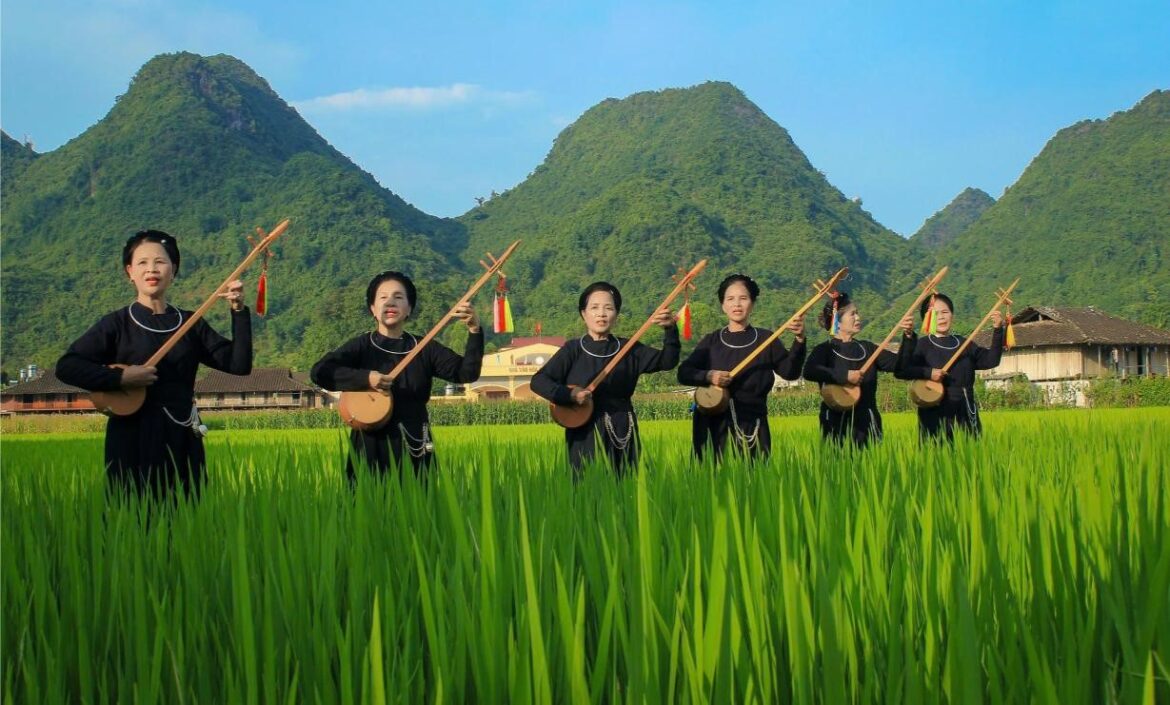
Vietnamese Tourist Villages offer a deeper way to explore Vietnam (source: Heritage)
II. Top 5 Vietnamese Tourist Villages Honored as “Best in the World”
To date, 5 Vietnamese Tourist Villages have been recognized by UN Tourism in 2022, 2023, 2024, and 2025. Each village holds a unique beauty and narrative:
| No. | Village Name | Province/City | Year of Recognition (As “Best Tourism Village” by UN Tourism) |
| 1 | Thái Hải | Thái Nguyên | 2022 |
| 2 | Tân Hóa | Quảng Trị | 2023 |
| 3 | Trà Quế Vegetable Village | Đà Nẵng | 2024 |
| 4 | Lô Lô Chải | Tuyên Quang | 2025 |
| 5 | Quỳnh Sơn | Lạng Sơn | 2025 |
1. Lô Lô Chải (Tuyên Quang)
Lô Lô Chải is a community tourism destination developed with a focus on green and sustainable practices, located at the foot of the majestic Lũng Cú Flagpole, Ha Giang province (now in Tuyên Quang province). The village has focused on improving infrastructure linked to environmental protection, planning waste collection and treatment systems, limiting single-use plastic, increasing green spaces, and improving clean water and standard restroom facilities.
Crucially, Lô Lô Chải prioritizes the preservation of the traditional landscape and architecture, such as the earthen rammed houses of the Lô Lô people, while controlling the flow of tourists to maintain ecological balance. It serves as a strong role model for other Vietnamese Tourist Villages.
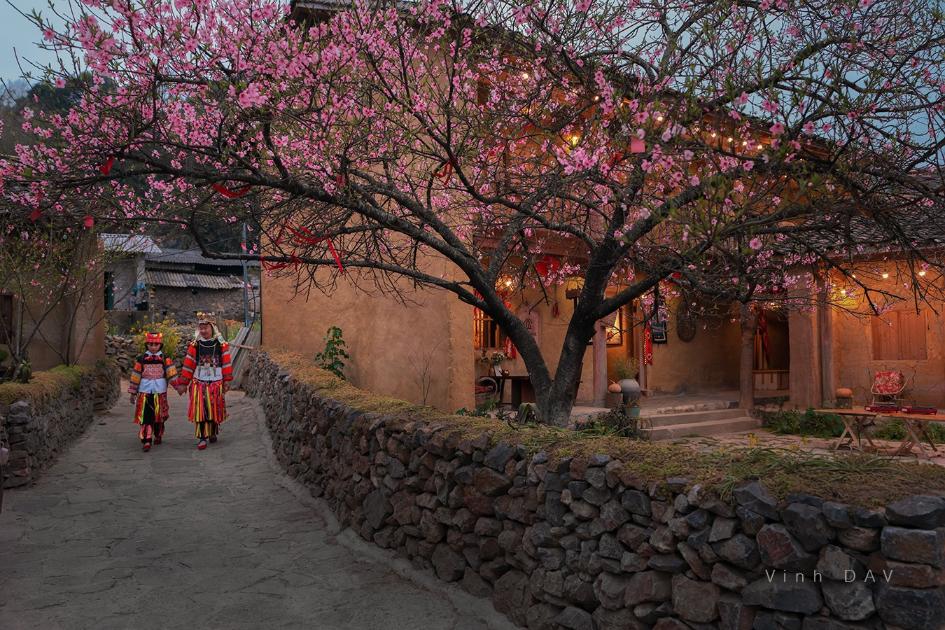
Lo Lo Chai is a community-based tourism destination developed in a green and sustainable way (source: Vinh Dav)
2. Quỳnh Sơn (Lạng Sơn)
Quỳnh Sơn is located within the Bắc Sơn Uprising Special National Monument and the UNESCO Lạng Sơn Global Geopark. The village is famous for its beautiful natural scenery, lush green rice fields, and traditional stilt houses.
A notable feature is the Tày culture, which is vividly preserved and promoted in daily life. In Quỳnh Sơn, visitors have the opportunity to learn about the local culture, stay in traditional stilt houses, participate in agricultural production, try fabric weaving, and enjoy local cuisine.
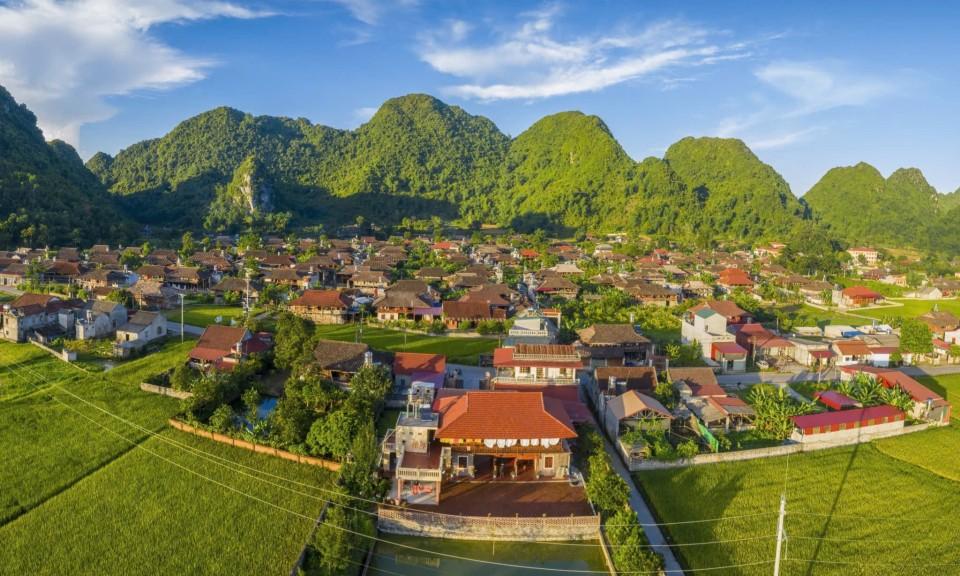
Quynh Son Village is famous for its beautiful natural scenery and rich cultural identity (source: collected)
3. Thái Hải (Thái Nguyên)
Thái Hải, located 12 km from Thái Nguyên city center, is home to the Tày and Nùng ethnic groups. In 2022, Thái Hải became the first Vietnamese Tourist Village to be selected by UN Tourism.
Spanning 25 hectares, Thái Hải features 30 stilt houses that are hundreds of years old. These houses were relocated from the ATK Định Hóa area (Thái Nguyên) and authentically restored for optimal preservation. Visitors can tour the ethnic people’s homes, engage in traditional crafts like weaving, vegetable growing, tea picking, rice wine making, and rice cake making, while enjoying Hát Then singing and Đàn Tính lute performances.
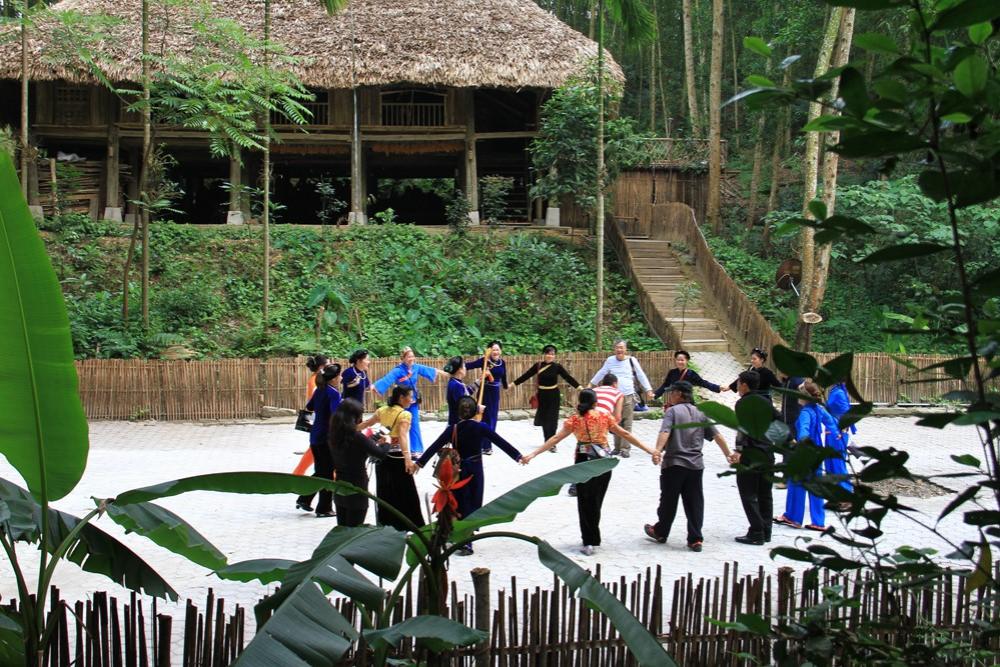
Thai Hai Ethnic Stilt House Ecological Reserve Village
Here, traditional customs are kept nearly intact. “Sharing one rice pot, spending from one shared fund, raising children together, and conducting community tourism” is a unique cultural trait of the Tày people in Thái Hải. The cuisine is also a highlight, featuring khâu nhục (braised pork), roast pig, five-colored sticky rice, and charcoal-grilled fish.
4. Tân Hóa (Quảng Trị)
Tân Hóa Commune in Minh Hóa District was honored by the World Tourism Organization (UNWTO) as a “Best Tourism Village 2023” for its unique “weather-adaptive model.” Situated in a valley of limestone mountains, Tân Hóa was once known as a flood zone of Central Vietnam. However, residents innovated a floating house model, which allows them to live with the floods and turn a natural challenge into a tourism opportunity. That has made Tan Hoa one of the best Vietnamese Tourist Villages in the world.
Tân Hóa offers engaging experiences like running, cycling, ATV off-road driving, cave exploration (Tú Làn, Tiên Cave), and relaxation. A must-do experience is learning about the customs and culture of the Nguồn people, how the Tân Hóa residents coexist with floods, and how they adapted to the weather to develop tourism. Cycling along the peaceful village roads while learning how the floating houses operate during the flood season is a truly unique activity.
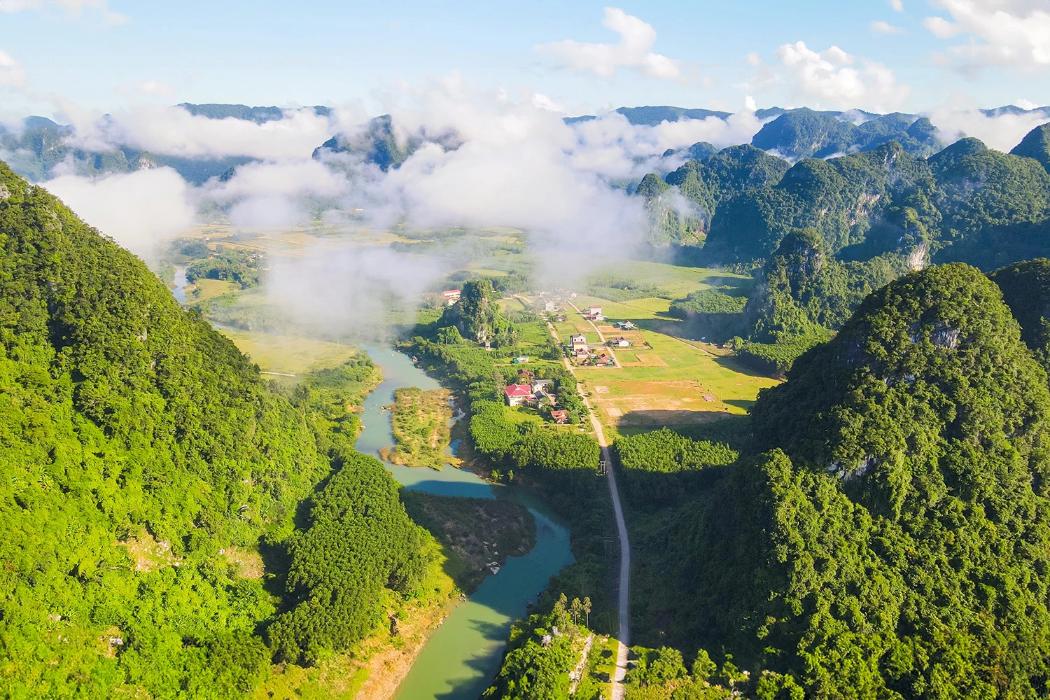
Tan Hoa – One of the best Vietnamese Tourist Villages in the world (source: collected)
5. Trà Quế Vegetable Village (Đà Nẵng)
Trà Quế Vegetable Village in Hội An was recognized by UN Tourism in 2024, as Vietnam’s sole representative that year. Established in the 16th century, the village is located 3 km from Hội An ancient town and is famous for its long history of organic vegetable farming. This is one of the most outstanding and well-known Vietnamese Tourist Villages, attracting thousands of visitors every day for sightseeing and experiences.
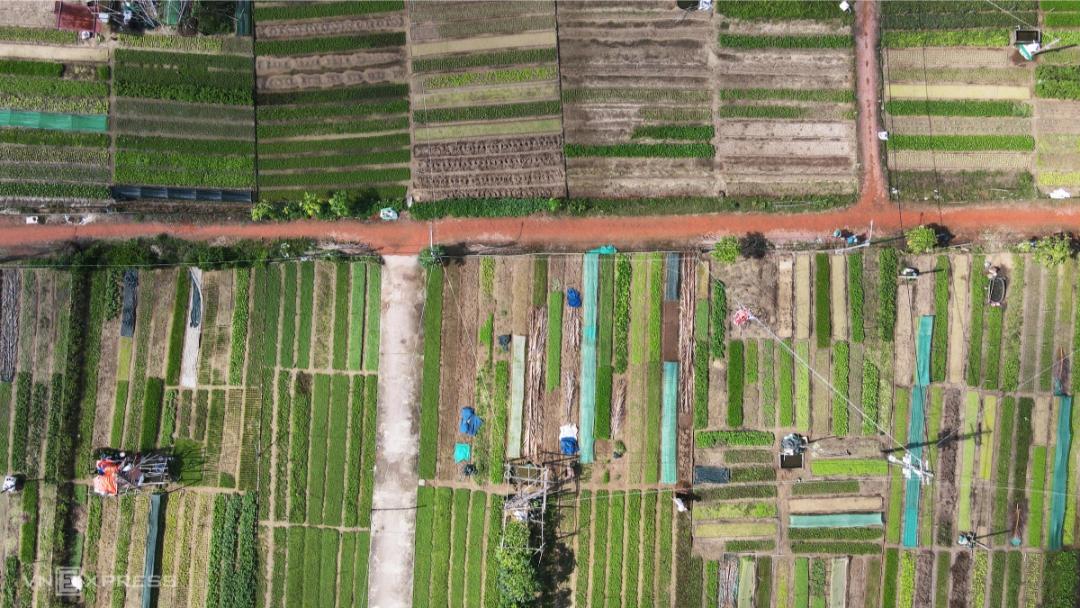
Tra Que Vegetable Village – One of the most outstanding Vietnamese Tourist Villages (source: VNExpress)
The favorable alluvial soil mixed with sand and mild climate provides ideal conditions for farmers to use algae from the river and ponds, along with organic manure, completely avoiding chemicals and pesticides. The vegetables are guaranteed to be clean and safe, contributing significantly to sustainable tourism. In the gardens, visitors can try their hand at the steps of vegetable cultivation under the guidance of the locals.
Trà Quế vegetables are essential ingredients for local specialties such as tam hữu (shrimp, meat, aromatic herbs), ram cuốn (spring rolls), Mì Quảng (Quảng-style noodles), Cao Lầu, and Bánh Xèo (savory pancakes). The best time to visit is early morning or late afternoon, to avoid the heat and witness the peaceful scene of farmers working the fields.
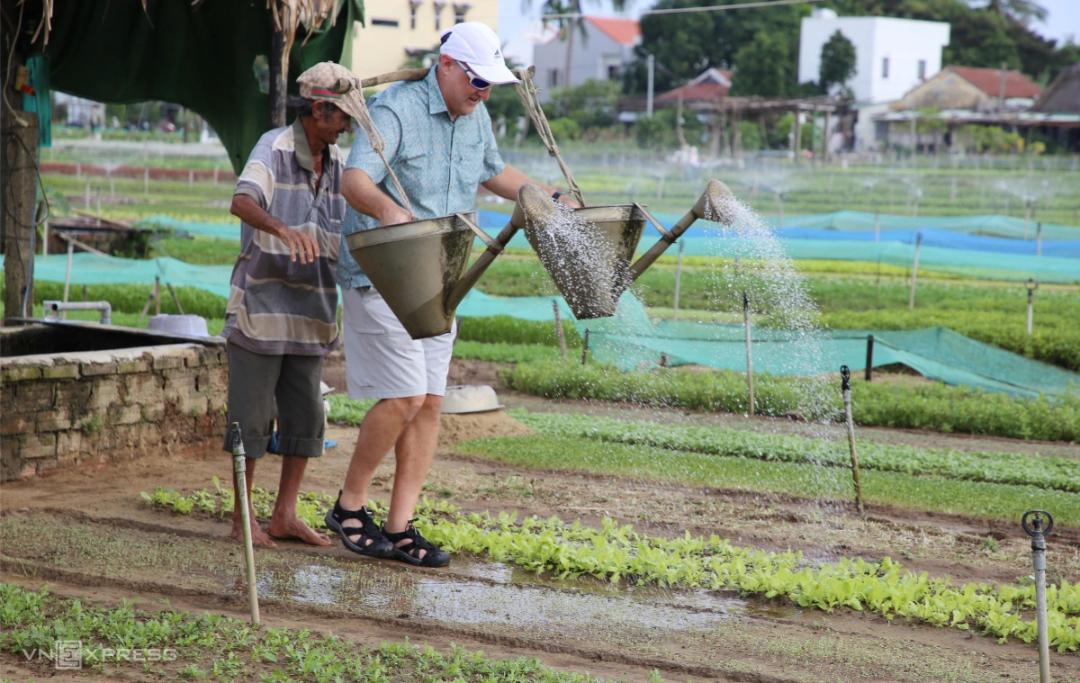
Visitors enjoy watering vegetable beds with a bamboo shoulder pole (source: VNExpress)
These Vietnamese Tourist Villages are more than just destinations; they are stories of resilience, cultural preservation, and the sustainable development of Vietnamese communities. Plan your trip to explore these amazing villages! Contact Lux Travel DMC for support and let’s create a journey that perfectly matches your desires.
